
Symptoms
Symptoms of Fusarium root rot are similar to most Fusarium species.
The seedling stage is most susceptible to Fusarium spp. infections in peas and lentils. Commonly referred to as ‘damping off,’ Fusarium infections are characterized by black stems at the soil surface, red vascular tissue in the stem cortex, a lack of secondary roots, stunted, yellowing, and wilted plants followed by complete death or necrosis.
Generally, infections start as small brown lesions, nearly always at the point of seed attachment, where the pathogen typically first enters the plant.
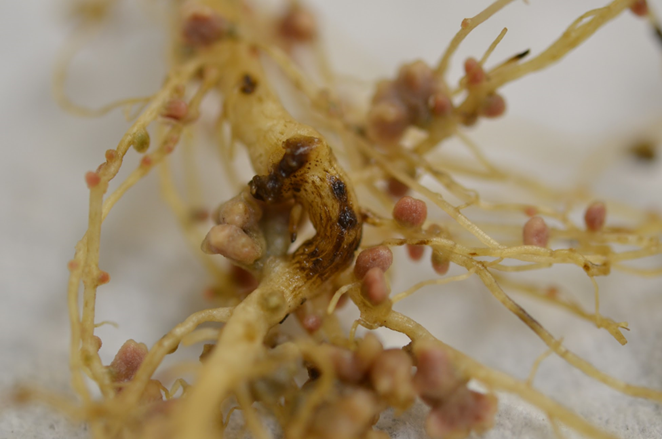
As the disease progresses, these smaller lesions coalesce into larger necrotic areas that wrap around the entire stem and can expand upwards on the stem by one to two centimetres above the soil level below. Compared to Aphanomyces root rot, it takes Fusarium more time to form lesions and spread to the root system.
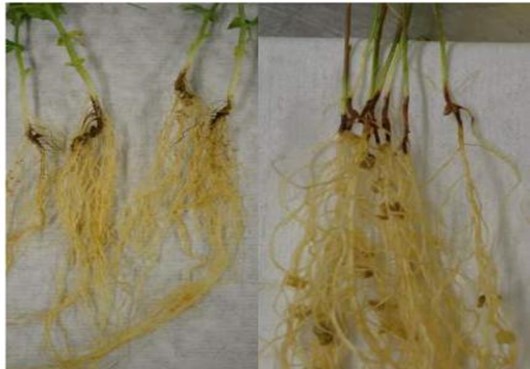
In this final stage of root rot, the taproot is girdled, and the plant is yellow, wilted, and will die off completely.
Severely infected root systems can experience an 80–100% reduction in root mass and very poor nodulation.
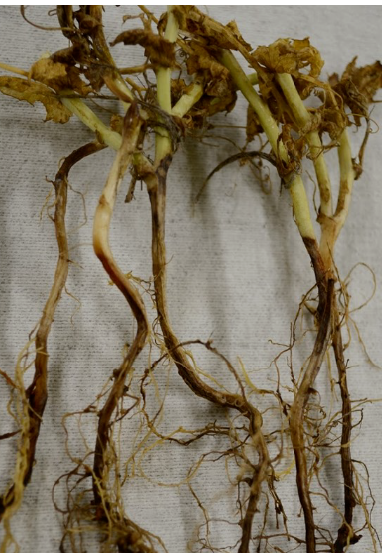
As red streaks running through the vascular bundles indicate, F. solani and F. avenaceum can infect the xylem below.
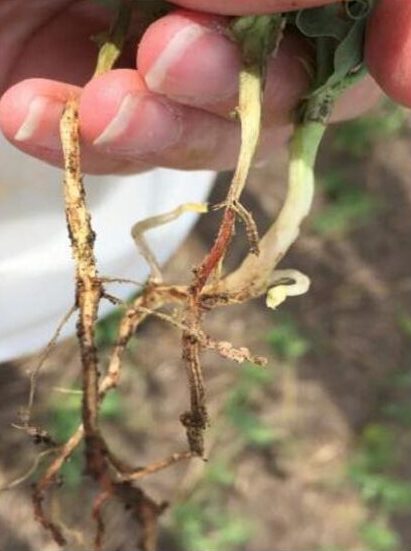
Fusarium root rot often appears as yellowing patches in the field, but shoot symptoms are indistinguishable from those of Aphanomyces root rot. Extensive yellowing and stand collapse do not occur to the same severity as Aphanomyces.
The photos below show an example of Aphanomyces and Fusarium root rot on peas. Fusarium root rot is evident by the taproot’s complete blackening, and Aphanomyces causes the lateral roots to brown. Fusarium can often mask Aphanomyces symptoms.
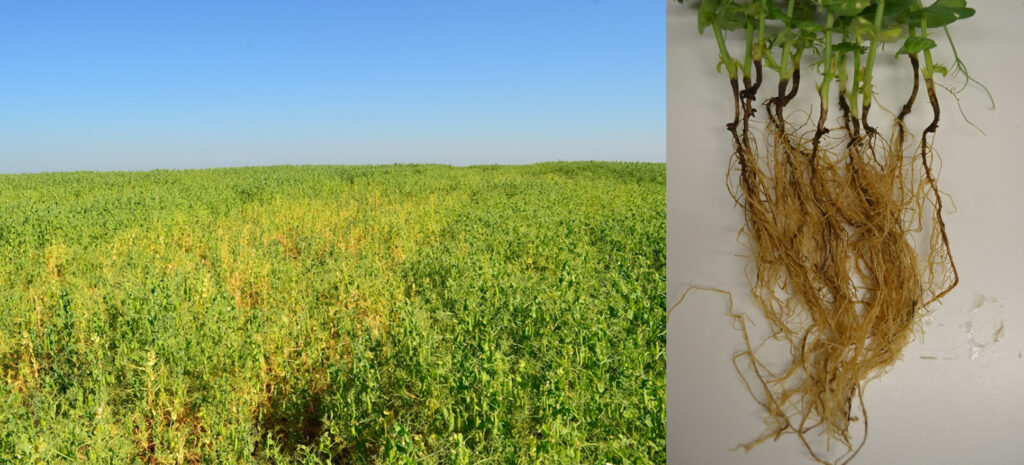
The most severe symptoms and crop yellowing are seen when Fusarium and Aphanomyces root rots are together.
Early season infections cause seedling blight, and plants die prematurely, causing a direct and substantial loss.
Later-season infections, typically occurring approximately 6–8 weeks after seeding when plants are in early flower, only have a minor effect on yield but can delay crop maturity, affecting harvest timing and weakening the plant stems, causing lodging and harvest challenges. A resulting thin crop stand from dead plants can also cause issues with weed management.